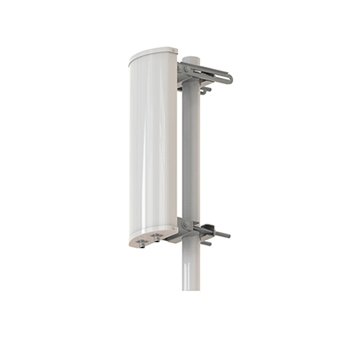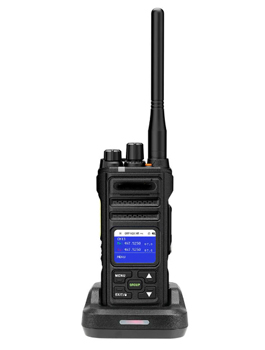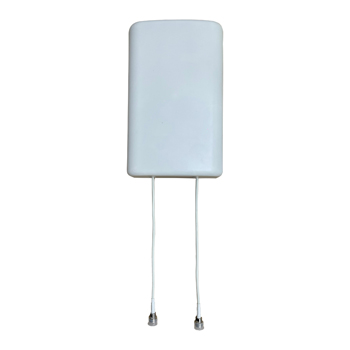Table of Contents
ToggleWhat is ZigBee?
ZigBee is a widely used wireless communication protocol on the Internet of Things (IoT) and Machine-to-machine (M2M) applications. The main purpose of setting up a low-rate wireless technology is to achieve low-power end-to-end devices. The ZigBee wireless standard is based on IEEE 802.15.4 personal area network standard. It operates in the unlicensed spectrum of bands 2.4 GHz, 900 MHz, and 868 MHz. Apart from having a low rate, ZigBee devices would have lower power consumption, leading them to have long battery life. This is where ZigBee devices would have their advantages over similar short-range wireless technologies such as Bluetooth and Wi-Fi. Since Wi-Fi and Bluetooth devices have very battery life compared to that ZigBee devices. The operating range of ZigBee devices is in the range from 10 m – 100 m. The proposal for ZigBee was made by an alliance known as ZigBee Alliance established around 2002. Then, in 2005 ZigBee 1.0 was announced as a wireless personal area network (WPAN) standard. When it comes to security concerns, ZigBee has its own advantages over its competitors such as Wi-Fi. With all these promising features ZigBee is widely used in many verticals and applications and gaining huge popularity in the market.
ZigBee Networking
Before diving into ZigBee networking essentials, it is noteworthy to identify several types of ZigBee nodes. Each ZigBee network has at least one coordinator, a few routers, and many end devices. A coordinator has the following features:
- It should not be idle in any given situation
- It initializes the network by selecting the channel and the PAN ID
- It routes data in the network and allows routers and end devices to join the network
A router has the following features:
- It is mandatory for a router to join the network before transmitting and receiving data
- It routes data in the network
- It should not be idle
An end device has the following features:
- It can go into sleep mode when it’s not transmitting data
- It can send and receive data only via its parent
Now having identified the main components of a ZigBee network, next we will discuss various network topologies in a ZigBee network. A ZigBee network can be realized using the Star topology, where a ZigBee coordinator is a central control. This central node would gather all the information from all connected sensor nodes. Tree topology is another famous ZigBee networking topology. This topology follows the tree, branch, and leaf structure. A ZigBee network can be realized using a Mesh topology as well. However, since only the end devices are only capable of sleeping, ZigBee networks cannot be real Mesh networks. Therefore, a protocol known as “DigiMesh” is used to realize Mesh networks.
ZigBee Architecture
The ZigBee architecture consists of five main layers. They are (from bottom to top):
1. Physical Layer
This layer is defined under the standard IEE 802.15.4 WPAN Standard. Its main responsibility is to control the radio transceiver and send commands and information as data packets among various devices.
What can Tesswave do for you?
Tesswave provide 100+ antenna products and you can contact us for antenna customized solutions, get in touch with us today to get a Free quote.
Get an Instant Quote
Get a FREE quote and we will contact you within an hour
2. Medium Access Control (MAC) Layer
This layer acts as the intermediate layer between the network layer and the physical layer. MAC layer is also defined in IEE 802.15.4 WPAN Standard. It is also responsible for transferring the beacon frames for synchronization.
3. Network Layer
This layer is defined in the ZigBee specification. It handles all network operations. This includes:
- Network Setup
- End device connection and disconnection
- Routing
- Device configuration
4. Application Support Sub Layer
This layer provides services for end devices to interact with the network layer. These services are provided by Application Support Data Entity and Application Support Management Entity.
5. Application Layer
This is the final and topmost layer in the ZigBee architecture. It holds user applications and ZigBee Device Objects (ZDOs). ZDOs are responsible for providing an interface between application objects and the Application Support Sub layer in ZigBee devices. It is also responsible for binding new devices and removing existing devices from the network.
When to consider ZigBee?
Before identifying why ZigBee would be a great candidate for your design application. First, let’s consider some of the available ZigBee specifications in the market. There are three main ZigBee specifications, namely:
- ZigBee Pro: This provides low-power device-to-device communication. It also offers the new feature of “Green Power”, where self-powered devices are encouraged by energy harvesting.
- ZigBee RF4CE: This is a simple ZigBee specification, where a user does not need the complex Mesh networking capability in ZigBee standard.
- ZigBee IP: This specification provides IPv6-based full wireless mesh networks.
ZigBee is ideal for applications that require low power consumption, with an enormous number of devices interconnected to each other. ZigBee is not ideal for applications that require high data rates and are most suitable for distances ranging between 1m – 100m. It is also suitable for applications that require high reliability. High reliability is achieved by ZigBee Mesh networking. Another interesting feature of the ZigBee Mesh network is its self-healing capability. This self-healing capability can help the network automatically repair itself with the changing environment. ZigBee is also equipped with over-the-air AES-128-CCM encryption to secure communication.
Advantages and Disadvantages of ZigBee
Let’s compare ZigBee with other most sought IoT and M2M WPAN solutions in the industry.
| Advantages | Disadvantages | |
| ZigBee | Easy to install, Reliable and cheap, Low power consumption, Better battery life Can sustain up to 240 devices | Low data rates, Not as secure as Wi-Fi Short range |
| Bluetooth Mesh | High data rates are possible Low price, Optimized for creating large scale connected device networks | Costly to install and maintain, Complex topologies leading to expensive maintenance cost, Considerable level of power consumptionShort range |
| Wi-Fi | High data rates, High bandwidth | Costly to install, Short range, Inefficient power consumption |
Applications of ZigBee
ZigBee is used in different verticals and industries in the modern world due to lower power consumption and increasing popularity. The ZigBee is increasingly becoming popular as ZigBee Alliance is growing day by day making different devices interoperable with each other. Some of the main application areas where ZigBee is deployed are:
- Smart Appliances: These include smart home appliances and smart health monitoring devices. They are limited to a given personal space where monitoring and controlling of devices is needed.
- Smart Lighting Systems: These systems would manage lighting variations in a given space by controlling the light penetration either remotely or by using in-house applications.
- Smart Energy Management Systems: These include smart meters and smart solar tracking devices that would help the user to monitor and control important variables in the environment and in the utility.
- Smart Shopping Spaces: Smart supermarkets and retail stores can use ZigBee-based sensors and devices to operate a self-taught system. These include smart shopping carts and Electronics shelves.
- Smart Parking Systems: ZigBee can be used to effectively maintain a parking space to enhance user requirements.
Conclusion
In conclusion, we can say that ZigBee is an ideal candidate for WPAN networks that require low power and low data rates. With the increasing number of organizations and industries joining ZigBee Alliance, it is a promising technology for the future.








